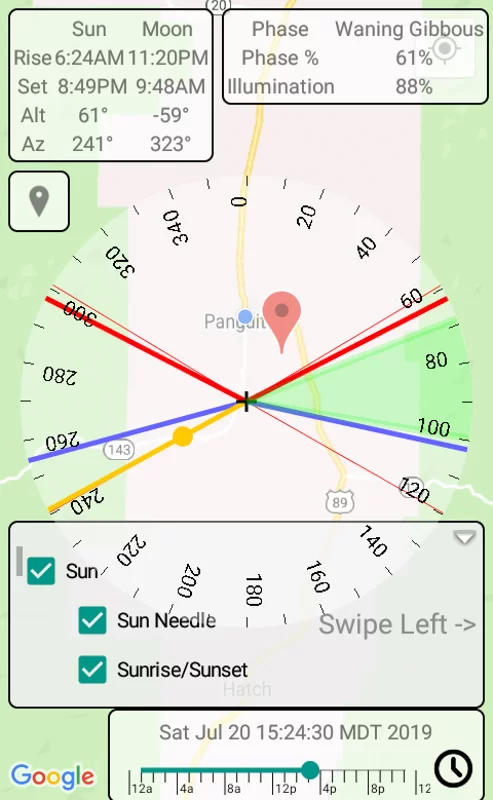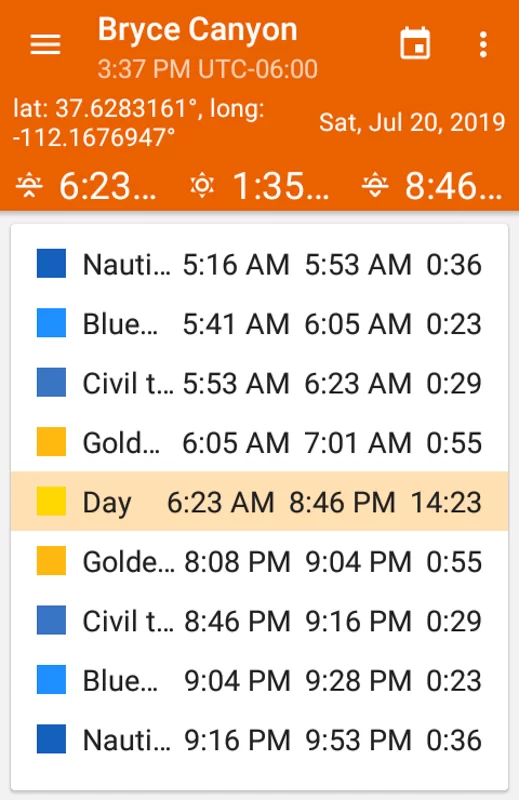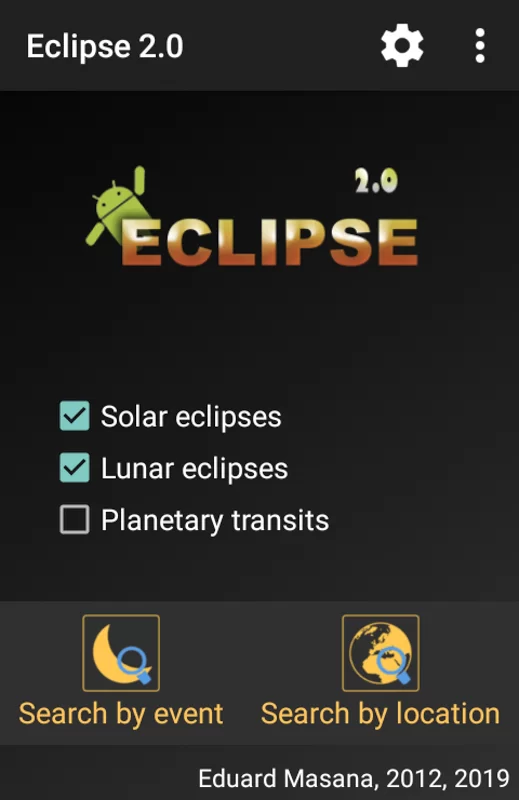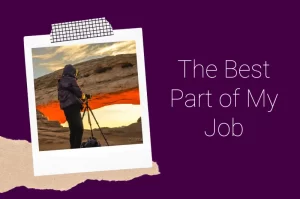As a landscape photographer, I have a lot of tools at my disposal for creating my beautiful landscape photos. Many of these are directly related to my camera. Today, I’m going to share five tools which are indirectly related to my camera, but I couldn’t do without in my endeavors. These tools are apps on my smartphone. Today I share 5 apps I use in my landscape photography.
Most of these apps have a specialty. Sometimes they have overlapping features, but I use them all for a different purpose. These apps are available for Android. I don’t know if they are available for the iPhone. I’ll link to the free download pages on Google Play. So here are 5 apps I use in my landscape photography in no particular order.
1. Sun Position Map

This app is amazingly useful when it comes to predicting the exact angle and direction which the sun or moon will be at a particular time on a particular day. It will also track the Milky Way, constellations, and Messier objects. It has the phases of the moon in addition to the sunrise/set and moonrise/set times. I can choose map views between satellite, regular map, hybrid map, and terrain views. All of this tracking is done via GPS and Google Maps.
I use this app to help me determine where the sun or the moon will be against a particular landscape I want to photograph. If I want a photo of the sun coming up over the famous Teton mountains, I want to make sure that the sun will be in the right place BEFORE I drive out there only to be disappointed. If you can’t tell, I’ve experienced that particular problem before.
This app is no longer available on Google Play so I included a different link to download it. Go at your own risk.
2. Golden Hour

This handy little app will tell me the exact times when the sun rises and sets. It also breaks down when golden hour and blue hour start and end in addition to civil and nautical twilight and full dark. I can also have it tell me when these windows start and end in different locations in addition to my own GPS coordinates. I can even save locations for later use. You’d better believe I’ve started my own collection of GPS coordinates and other local sites in this app.
The golden hour is the most popular time for a landscape photographer to be out in the field taking photos. Blue hour has also become a popular time for landscape photography. If I want to get the best photos I can, I need to know when these windows of time are so that I can be in place and set up in time. Then I may accurately project when to leave home and arrive onsite for landscape photography.
3. Eclipse 2.0

Celestial phenomena are popular landscape photography subjects when they can be incorporated into the background of scenery. Eclipses are high on the list of astronomical events which I chase after as a landscape photographer. To add them to my photos, I need to know when they are and where they are visible. That’s where this app comes in.
This app will track full and partial solar eclipses, partial and full lunar eclipses, and even planetary transits (when 2 or more planets get close to each other). Most of the time, the planetary transits aren’t worth the effort for me. However, the times/locations of solar and lunar eclipses are information I want to know. This app gives me that information for years to come.
4. DOF Calculator

Depth of field is one of those concepts which most average people know but don’t understand until it’s explained and demonstrated. Depth of field is simply what part of the photo is in focus. With a landscape photo, you want as much of the landscape to be in focus as possible. No one likes a blurry landscape scene.
This tool allows me to calculate that based on the equipment I have and allow me to determine where to point the center of my focal plane so that I have enough of the scene in the front and back half of my focal plane. This allows me to have a picture in focus.
This app will calculate my near and far limits for focus based on my lens’ f/stop number, focal length, subject distance, and whether or not I have added a telephoto multiplier and what power multiplier. Take the example in the screenshot. I know that, if I have a subject about 1000 ft away from me and I use a 35mm wide lens on f/4.8, I need to aim the center of my focal plane just over 9 ft away from me for maximum focal power (that’s a bit of what hyperfocal distance is). This takes a lot of the guesswork out of pointing and focusing in the right place out in the field and risking missing the focus on my shot (it’s happened before).
5. Stop Star Trails Calculator

When I want to go for astrophotography, I have my choice of trying for a shot of the Milky Way or a shot of star trails. I’ve tried both and they look bad together. One of the problems with this is, when the stars blur into streaks forming trails, the Milky Way also blurs badly. To prevent this bad look, I need to know when star trails start in order to get the photo I want.
This app will tell me just how long to keep my shutter open for stars as dots in my photos based on 2 variables. First, the app wants to know what aspect ratio I use on my camera. Most cameras use a 4:3 aspect ratio but not all do. Mine does. The other variable it wants to know is the focal length in millimeters.
The more confined the view, the less time you can have your shutter open or risk getting star trails instead. I simply input the values I need. Then, I instantly find out the maximum shutter speed I need for my astrophotography.
This app is no longer available on Google Play so I included a different link to download it. Go at your own risk.
Conclusion
I’m glad you stuck around for this list of apps which help power my landscape photography. Sometimes I need to do math or track the positions of celestial objects. However, there’s nothing like a computer for taking care of those tasks for me. Sometimes I need this information in the field and there’s nothing more portable for me than my smartphone for carrying the information I need.
Know any more good apps which I could use in the field with my landscape photography? Leave links in the comments section below. I’d love to check out some other options which might improve things for me even more.



